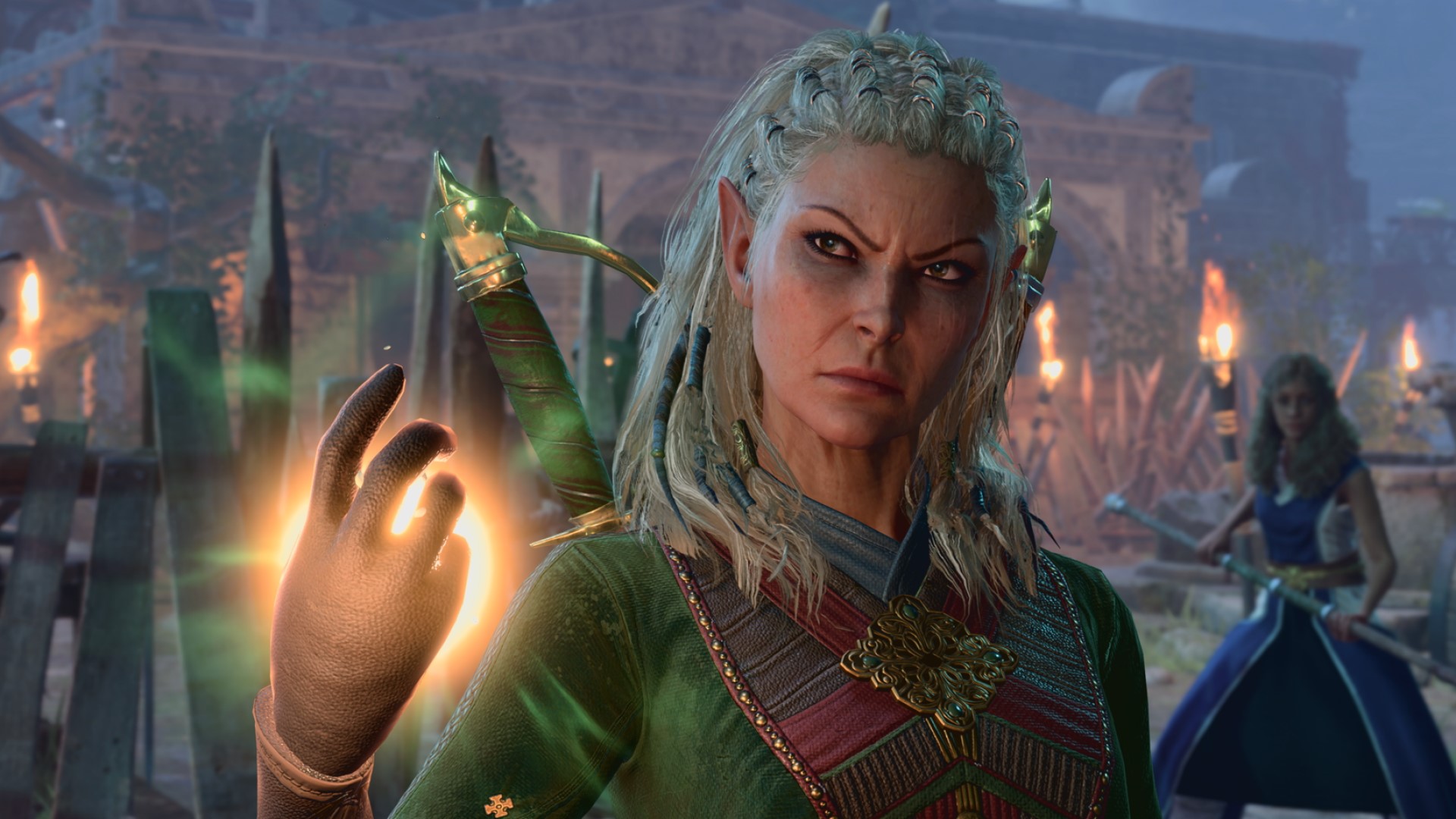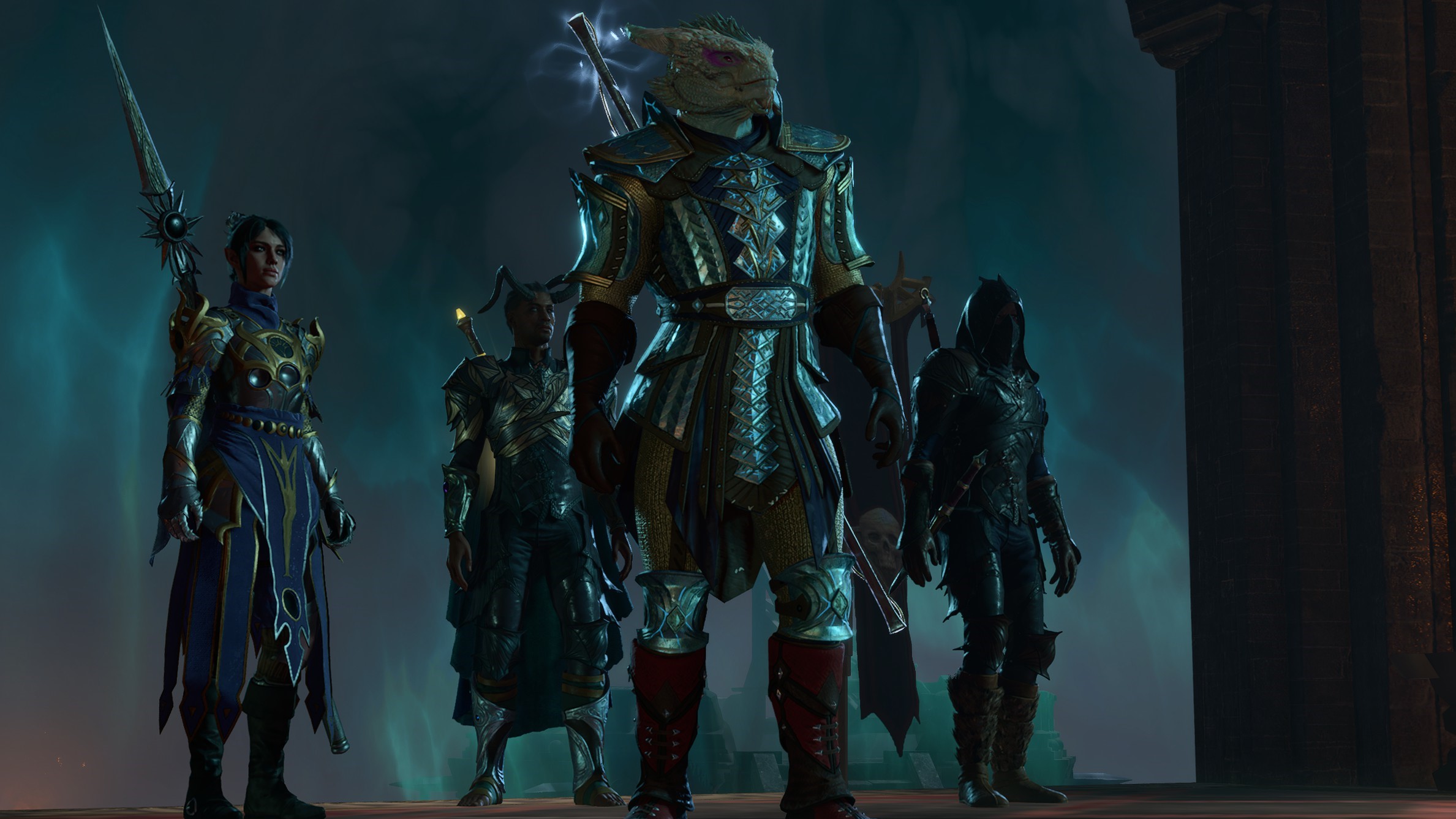Baldur's Gate 3 vs. Baldur's Gate 2 - is Larian Studio’s instant classic anything like the classic BioWare RPG?
They both carry an official D&D license and share a setting, but beyond that the two roads diverge

It’s great to see Baldur’s Gate 3 finding such a large and excited audience. Games like this don’t come around very often - it’s so malleable, so able to roll with whatever silly roleplaying scenarios you can think to throw at it. It’s a trad-fantasy RPG bound by extremely comprehensive D&D rules, an immersive sim, and an improv comedy, all at once. It richly deserves this moment.
But to an older generation of RPG players, the moment’s a bittersweet one. Because this isn’t the Baldur’s Gate 3 we hoped for and dreamed about since we played BioWare’s truly seminal 2000 isometric RPG. In many ways, the two games couldn’t be much more different. So if you’re looking for your next fix after completing Baldur’s Gate 3, you should probably sit down for this because there are some things you should know.
Incredibly hardcore fans and internet sleuths will know that Baldur’s Gate 2: Shadows of Amn was itself a sequel to 1998’s Baldur’s Gate, another critically beloved isometric RPG built by a team of soon-to-be-legendary developers at BioWare. Baldur’s Gate found a way to translate dice rolls and THAC0 into real-time combat, though not without confusion or fiddliness, but what made it compelling at the time was the characterization of your party members and the thrill of inhabiting the Forgotten Realms.
Two years later, BioWare made the original game look like a macaroni painting of an RPG by comparison.
Getting the formula right

Baldur’s Gate 2 featured a similar ‘real-time with pause’ combat system that used virtual D&D dice rolls under the bonnet to simulate battles, and it placed a real emphasis on class skills, status effects, smart spellcasting, and generally paying attention to the stats and attributes of your characters, gear, and abilities. In that sense, Larian Studio’s Baldur’s Gate 3 feels part of the same lineage. Not only is it extremely unwise and inefficient to rely on base damage attacks from your weapons to brute force your way through combat, but it’s also not very fun. And the same was true back in 2000 - simply equipping the biggest sword and clicking on the red enemy indicators was neither particularly exciting nor what the designers wanted you to do.
Nevertheless, combat is the weakest aspect of Baldur’s Gate 2. Not because there’s anything especially flawed about it, beyond the inherent complexity of D&D rules and communicating to the player why they just got absolutely creamed. It’s simply that this element is overshadowed by all the others. By contrast, turn-based combat encounters always feel like a joy in Baldur’s Gate 3 because not only are you considering your party’s skills and stats, but the nature of the environment and how you can modify it to your advantage. Oil and fire combos, water and lightning, teleporting enemies into awkward spots. It’s an anecdote generator.
Back in 2000 though, BioWare didn’t leave the anecdotes to chance. Instead, writer James Ohlen and his team crafted a staggering volume of intrigue-laden, lore-deepening quests that twisted and toyed with your expectations and sent your game off into thrilling sub-genre diversions.
Sign up for breaking news, reviews, opinion, top tech deals, and more.
A tale of two approaches

You’re drawn into hallucinogenic circus tents of madness, thrown into prison, and left to escape using your wits and an empty inventory. You infiltrate and take down cults and wrestle with greyscale morals. Even the most bread-and-butter fetch quests can’t help themselves, they have to subvert your expectations and throw some new leftfield element in that sears the sub-plot into your mind.
And while the same could be said of Baldur’s Gate 3 on paper, the execution of the two games couldn’t be more opposed. Even in its darkest moments, there’s something more convivial and bouncy about it than in BioWare’s isometric game. Larian has dialed down the puns and the theatrical voice acting in this game compared to Divinity: Original Sin and that game’s sequel, but consider this: Baldur’s Gate 3 begins in a volley of cliches like “Who am I? Your only chance of survival” and the first words you hear from your own character are “Where am I?” as they stagger around a flaming dungeon. Baldur’s Gate 2’s opening is much more literary, less cinematic, and inarguably darker.
You begin in a torture chamber built by chief antagonist Jon Irenicus, who’s been impassively mistreating and demeaning you out of inhuman curiosity. Before you and Imoen are freed from your chambers you have a (proverbial) fireside chat with Irenicus about ethics, death, and determinism, and then he calmly departs and you begin to explore his dungeon of madness and depravity, where shrunken former humans float like withered maggots in stasis jars. Darker than a power cut at Tim Burton’s house.
If you’re looking to continue your Baldur’s Gate adventure by working backward through the series, then, you should expect a radical change in tone. An enjoyable one, certainly - anyone who enjoyed Larian’s new game will find tens of hours of pure, engrossing classic RPG delight in Shadows of Amn, but they don’t feel of a piece.
While the combat in Baldur’s Gate 2 is constantly double-checking the rulebook to ensure fastidious accuracy, Baldur’s Gate 3 plays fast and loose with the rules and solves some of D&D’s longstanding issues in doing so.
But if you can adjust your eyes to isometric scenes and tiny little low-poly avatars - not to mention a religious text’s worth of reading - you’ll find a take on the Forgotten Realms that’s aged like an oak-smoked Rob Lowe, bristling with intrigue in totally different areas than Larian’s game but just as much of a long-term love affair.
For more like Baldur's Gate 3, it's worth checking out the best RPGs, alongside the best story games.

Ad creative by day, wandering mystic of 90s gaming folklore by moonlight, freelance contributor Phil started writing about games during the late Byzantine Empire era. Since then he’s picked up bylines for The Guardian, Rolling Stone, IGN, USA Today, Eurogamer, PC Gamer, VG247, Edge, Gazetta Dello Sport, Computerbild, Rock Paper Shotgun, Official PlayStation Magazine, Official Xbox Magaine, CVG, Games Master, TrustedReviews, Green Man Gaming, and a few others but he doesn’t want to bore you with too many. Won a GMA once.